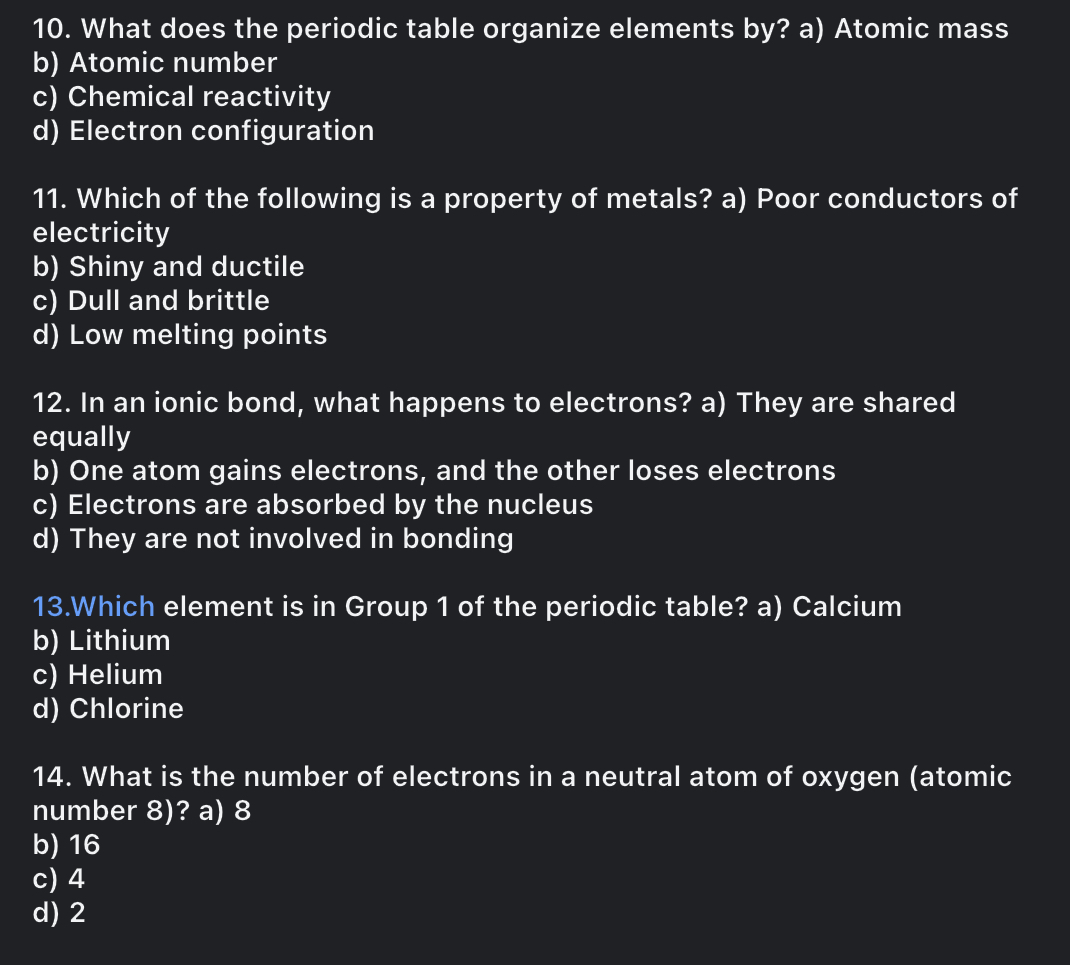What does the periodic table organize elements by? Which of the following is a property of metals? In an ionic bond, what happens to electrons? Which element is in Group 1 of the p... What does the periodic table organize elements by? Which of the following is a property of metals? In an ionic bond, what happens to electrons? Which element is in Group 1 of the periodic table? What is the number of electrons in a neutral atom of oxygen (atomic number 8)?

Understand the Problem
The image contains a series of multiple-choice questions related to chemistry, specifically focusing on the periodic table, properties of metals, ionic bonds, and atomic structure. We need to categorize these questions and identify their subtopics within chemistry.
Answer
10. Atomic number; 11. Shiny and ductile; 12. One atom gains electrons, the other loses; 13. Lithium; 14. 8
- b) Atomic number
- b) Shiny and ductile
- b) One atom gains electrons, and the other loses electrons
- b) Lithium
- a) 8
Answer for screen readers
- b) Atomic number
- b) Shiny and ductile
- b) One atom gains electrons, and the other loses electrons
- b) Lithium
- a) 8
More Information
The periodic table is arranged by increasing atomic number, metals are generally shiny and ductile, in ionic bonds electrons are transferred to create ions, Lithium is in group 1, and a neutral oxygen atom has 8 electrons.
Tips
A common mistake is confusing atomic number with atomic mass when identifying the layout of the periodic table.
Sources
- 2.5: The Periodic Table - Chemistry LibreTexts - chem.libretexts.org
- Ionic Bond | CK-12 Foundation - flexbooks.ck12.org
- The periodic table, electron shells, and orbitals - Khan Academy - khanacademy.org
AI-generated content may contain errors. Please verify critical information